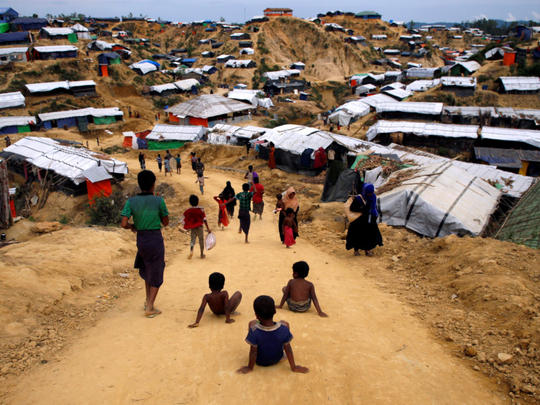
As the Myanmarese military drives out upwards of 600,000 Rohingya in what one United Nations official called “a textbook example of ethnic cleansing”, most media analyses correctly highlight ethno-religious discrimination and economic motives. But that leaves us with the question: Why only the Rohingya? Myanmar has other hated ethnic groups. Since the country first gained independence from the British in 1948, its government has been fighting the Karen, the Karenni, the Kachin, the Shan and the Mon. Those ethnic groups have had armed militias for decades. The Rohingya only recently spawned a small armed group — and most Rohingya disapprove of their methods.
So why are the Rohingya being so brutally singled out? The answer lies in Myanmar’s peculiarly stratified hierarchy of citizenship. In addition to full citizens, Myanmar has several less-than-full citizenship categories.
n Citizens “belong to one of the national races or whose ancestors settled in the country before 1823, the beginning of British occupation of Arakan State”. National races refer to indigenous groups with a heritage of linguistic and cultural competence, from which 1960s leader General Ne Win fashioned a Myanmarese nationalism that united disparate ethnic groups. These include the Karen, Mon, Shan and Chin.
n Associate citizens have “one grandparent, or pre-1823 ancestor, [who] was a citizen of another country”.
n Naturalised citizens are those who can “provide ‘conclusive evidence’ that their parents had entered and resided in Myanmar before independence in 1948. Persons who have at least one parent who holds one of the three types of Myanmarese citizenship are also eligible”.
n Resident foreigners have no citizenship rights at all. They cannot hold public office, move freely about the country or enrol in higher education.
In 1982, Myanmar passed a citizenship law that institutionalised a social hierarchy of full citizens, “associate citizens”, “naturalised citizens” and “resident foreigners” — complete with different-coloured identity cards for each status. The law was part of a campaign of “Myanmafication”, which included the later name change from Burma to Myanmar, whose ostensible goal was to include ethnic groups beyond just the Burmans — although Burman language and culture defined this nationalism.
The Karen, Mon, Shan and Chin, designated as “national ethnic groups”, have long taken up arms against a state they see as oppressive and are fighting for some form of self-determination, such as autonomy or independence. But they accept the state’s position that the Rohingya are “resident foreigners”, ineligible for even second-class citizenship because they do not have documents such as birth certificates and land titles. The poor often lack these documents simply because they often don’t own property and traditionally have home births. That the other groups buy into the othering of the Rohingya suggests that they have internalised the social hierarchy that grants them citizenship rights.
However, the Rohingya refused theirs. Before 1982, they were de facto citizens; now they are classified as resident foreigners. The government claims they are Bengali Muslims who didn’t arrive in the region until British colonial rule, between 1823 and 1948. If so, under the citizenship law, they should be able to become associate or, at least, naturalised citizens.
But in the 1980s, claiming that their roots go back to the eighth century, if not earlier, the Rohingya challenged the entire hierarchy and demanded full citizenship — and equal rights. They understand that Myanmar’s citizenship law renders them stateless — and are calling for it to be amended. The Myanmarese government apparently sees this as an existential threat to its system, more problematic than the effort of others to break away from central control.
That’s not what the government says, of course. Rather, the government and some observers point to the Rohingya Solidarity Organisation or the Arakan Rohingya Salvation Army and argue that the Rohingya are violent, militant terrorists.
However, research shows that how few Rohingya agree with or belong to these organisations, disagreeing among themselves how best to gain full citizenship. Most are focused on mere survival.
Many agree that these claims of ties with terrorism are dubious and unsubstantiated — but say that because they have been made, the prospects for resettlement in the developed world are nil. There is a belief that only Bangladesh could provide a durable solution to the crisis, which leaves the fate of hundreds of thousands of refugees in the hands of one of the poorest nations in the world.
— Washington Post
Navine Murshid is assistant professor of Political Science at Colgate University, US.










